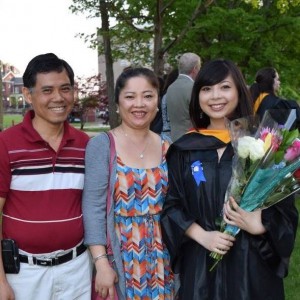
Pinning Ceremony
About Lucky
Hello friends, family, and curious strangers! Forgive me for having posted yet, there were some technical difficulties that took a bit to sort out – but I hope you will enjoy my upcoming collection of thoughts from here on out. A little about myself before I begin: My name is Srayluckyna Thach, but most people call me Lucky. I have just graduated with my BS degree from the School of Nursing at UMass Lowell! I am currently studying and planning to take my NCLEX-RN exam this summer and (hopefully) pass with flying colors, so cross your fingers for Nicole and I (she also graduated with me as you may already know!) I am Cambodian-American and I am the first (soon to be) nurse in my family. I currently do not work, but I am hoping to become an RN in community health. I enjoy the setting and working with families and individuals of all ages. I also enjoy health promotion and outpatient clinic settings. Although this is my interest right now, I honestly believe that I am up for whatever kind of nursing. Because nursing is so versatile, I believe that I will have more than one interest, and therefore perhaps, more than on “home” in nursing. I do not know where I will end up, but I hope to gain a lot of experience and of course, continue my education once I find my niche. I hope to continue my education within 5 years and obtain my master’s degree!
There’s been so much to say and I’ve been taking everything in and observing. For me, there are many things I see in China that his also common in Cambodia and within the Cambodian community in the U.S.. I took interest in comparing and contrasting the three different cultures (American, Cambodian, and Chinese), and it is indeed fascinating to see the reality of how close we may actually be in technology and healthcare development, but in other concepts such as mannerisms and educational structure, we are very (VERY) different!
On another note, I wanted to elaborate on my thoughts on our visit to the community health center. This particularly interested me because this was when I really began to think about home care and the role of the visiting nurse in the U.S. It was Dr. King who brought up an interesting aspect of visiting nursing that I had never thought about before. I always had wanted to be involved in more health promotion, therefore I have always had a strong interest in community health nursing. Dr. King had elaborated on her experience of being a home health nurse, and how she was really able to assess the patient conditions and lifestyle, and therefore are also able to formulate a better perception of the patient’s lifestyle, and then be able to help them outside the hospital. She was speaking about how people are not themselves when they are in the hospital, so when a nurse visits the home however, they can really help integrate better care in a managebale setting. I also enjoy the contunity of care aspect of visitng nursing as well.
Postpartum Visit
Today Nicole and I did a post partum visit with a doctor. We visited a baby girl who was 10 days old, and this was after a vaginal delivery. We visited with a doctor who was very kind, and we went with our student translator (Star). The doctor’s assessments included assesing the fontanels, testing for infant reflexes, and checking jaundice levels. She also assessed the perineum of the mother, measured her blood pressure, taught breastfeeding techniques, and performed traditioanl Chinese medicine techniques of massage on the baby for calming the baby down. There were several interesting things I learned on this visit about maternal care in China! We learned that the services were free for the mother, however the jaundice test was 15 yuan (equivalent to about $2-$3). Also if the jaundice level is above 6, the doctor will post pone vaccinations. I also noticed that the father was not involved in the visit, nor was encouraged to. He was somewhat just in the other room, and instruction seemed to be only addressed to the mother of the baby. In the beginning of the visit, an older woman opened the door with baby in hand, and Nicole and I had thought this was the grandmother of the newborn baby, however it turns out that this is the Nurse Maid (who is specialized and licensed) in helping to take care of the baby; after all, we learned earlier on this trip that the mother of the baby was not allowed to leave the room or the house (depending on how much one adheres to strict traditions) or shower, for approximately 1 month. This was according to traditional Chinese medicine, and this information was given to us by Dr. Zhang and also verified by several nurses here in China. Interesting, right? I could not be able to do that so I give credit to these wonderful ladies for their faith in tradition, as I know very well myself that tradition is important. Altough, sometimes as nurse, we may not agree with a patient’s beliefs about something, we at least need to respect the patient’s decision in their care. Sometimes as a nurse we may forget that, which is why it is important to learn about various cultures and gain that cultural competency a nurse should have – so then we are able to understand various traditions in order to better comfort our patients 🙂 Anyway, getting back on track, this tradition has to do with the concept of yin and yang concepts, so the Nurse maid helps cook, clean, and bottle feed the baby. Often times family would be involved in the newborn care such as grandparents of the newborn, however when we visited it was just the nursemaid, mother, husband, and baby at home. Another interesting fact we learned is that the mother will have her postpartum visit at the clinic 42 days post vaginal delivery, and this will be the first time the mother goes in and out of the house, to the clinic for follow ups.
Amongst several things we learned on this visit, I felt that the most valuable part of the visit was watching the doctor and the patient communicate. It was very welcoming, and I felt that much patient education was being done and that the patient was willing to learn as well. The things that the doctor did however, I thought were also very nurse-like in the us, and things basically a nurse is licensed to do. It Is interesting to see how also it would be vice versa where a mother would come in the clinic in the us, seeing a doctor, and here in china, it is a doctor visiting the mother. Above that, the doctor was going things that a nurse would be considered able to do in her scope of practice. Either way, the relationship that the participants seem to have was very earnest and welcoming. I find this as a trajectory into what I will be taking home from this experience here in China, and I really want to begin about doing home nursing after my 1 year of med surge. There’s actually SO much more I want to share because I felt that this visit had really gave me a better perspective or area of nursing that I want to begin in. I had always loved working in the community setting, and i know this through my numerous accounts of volunteering throughout high school- that this would be something I want to continue doing. I always saw myself out and about in the community, whether it’d be outpatient or at family health clinics. I am actually really ecstatic that I found or really have begun to see an open door for my niche to settle in. This visit was short simple, and enlightening for me. I loved seeing learning in the home environment, and the calm and happy expressions of the patient and doctor. I am excited for what awaits for me. Thank you everyone. I promise my future post will not be as extensive, but I have to make up for all these days of not posting!
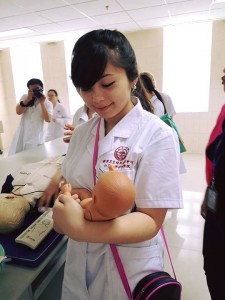
At the Shandong University Nursing Lab
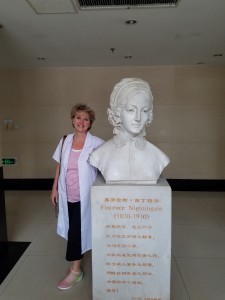




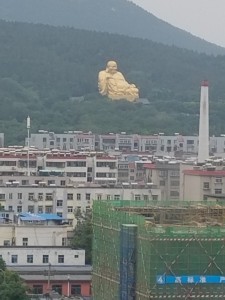
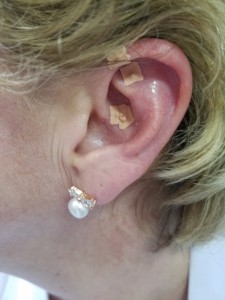
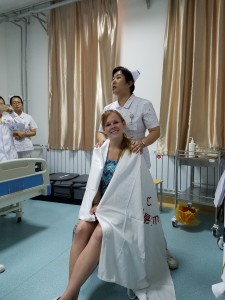
 if I were to live here I am convinced the best way to travel is to walk or buy a moped because they seem to make better time than sitting in traffic.
if I were to live here I am convinced the best way to travel is to walk or buy a moped because they seem to make better time than sitting in traffic.
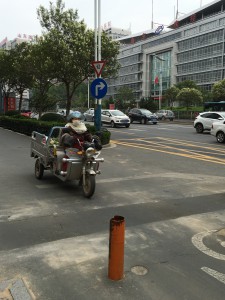

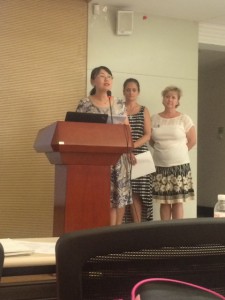
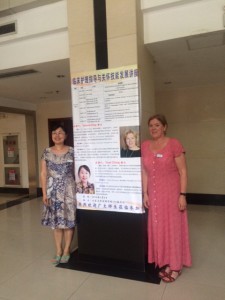


 N. Prior to that, I was a medic in the USAF. In 2009 I was deployed to Bagram Air Field, Afghanistan where I worked in an ICU step down unit for seven months. It was a unique experience there as there were so many different kinds of people being treated– most of them heavy trauma patients but many humanitarian cases including correction of cleft palates and other facial deformities in children. Shortly thereafter, I went to Joint Base Balad, Iraq for 6 months where I performed Contingency Aeromedical Staging Facility Command and Control- but just call me C2– I helped the injured guys (and one lady) get home, by far one of the most rewarding things I have ever done. After that, I have gone on several small trips abroad including one, teaching urban search and rescue and patient trauma assessment to “baby” El Salvadoran Special Forces troops. Currently, I live with my family in NH and we raise chickens, ducks, pigs, turkeys and have five “rescued” cats and a retired racing Greyhound. That’s me in a nutshell. My next post will have lots of pictures!
N. Prior to that, I was a medic in the USAF. In 2009 I was deployed to Bagram Air Field, Afghanistan where I worked in an ICU step down unit for seven months. It was a unique experience there as there were so many different kinds of people being treated– most of them heavy trauma patients but many humanitarian cases including correction of cleft palates and other facial deformities in children. Shortly thereafter, I went to Joint Base Balad, Iraq for 6 months where I performed Contingency Aeromedical Staging Facility Command and Control- but just call me C2– I helped the injured guys (and one lady) get home, by far one of the most rewarding things I have ever done. After that, I have gone on several small trips abroad including one, teaching urban search and rescue and patient trauma assessment to “baby” El Salvadoran Special Forces troops. Currently, I live with my family in NH and we raise chickens, ducks, pigs, turkeys and have five “rescued” cats and a retired racing Greyhound. That’s me in a nutshell. My next post will have lots of pictures!